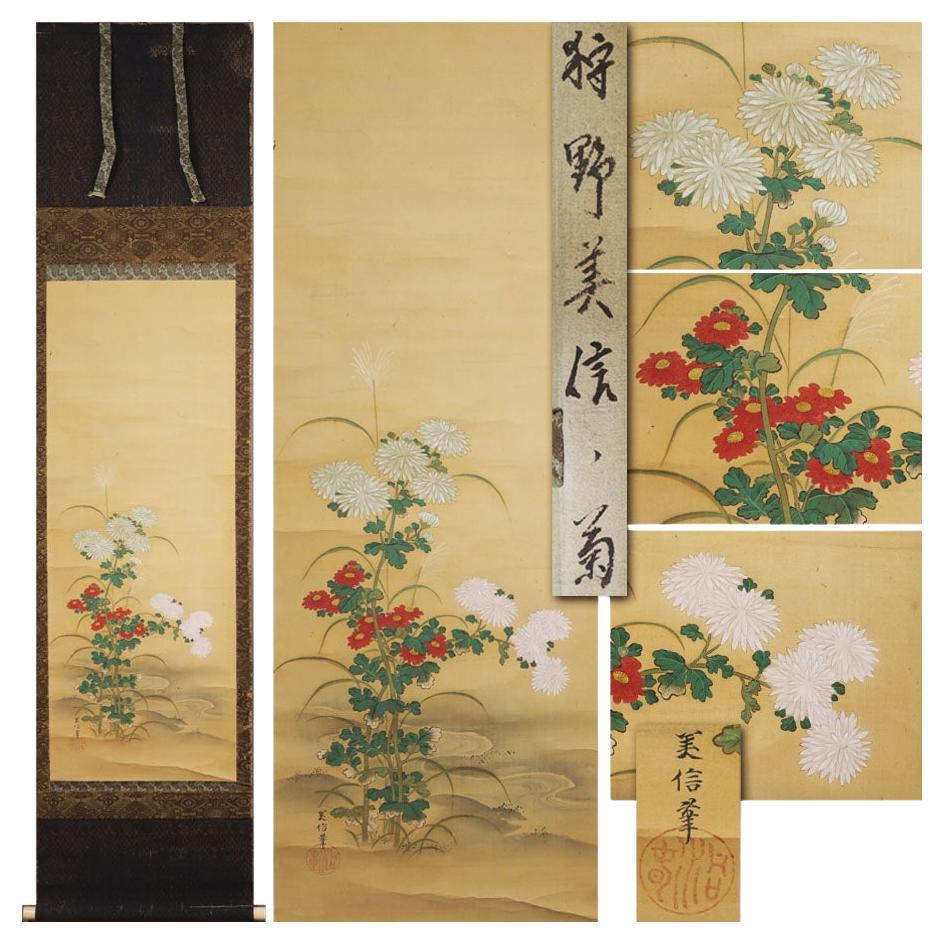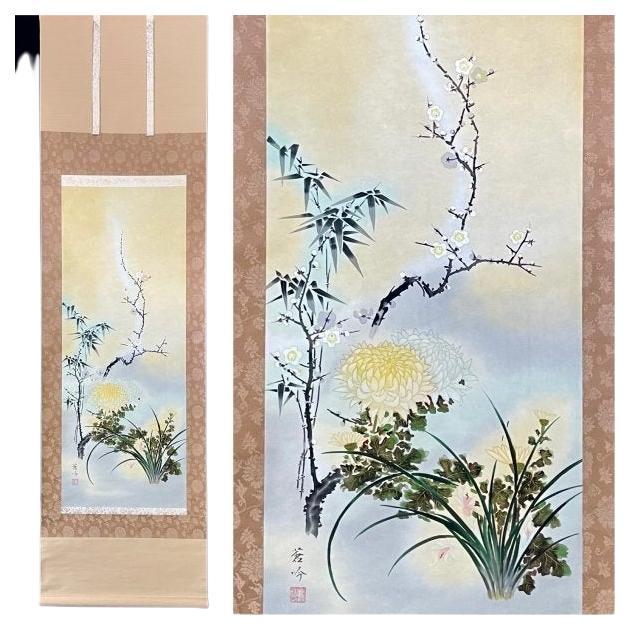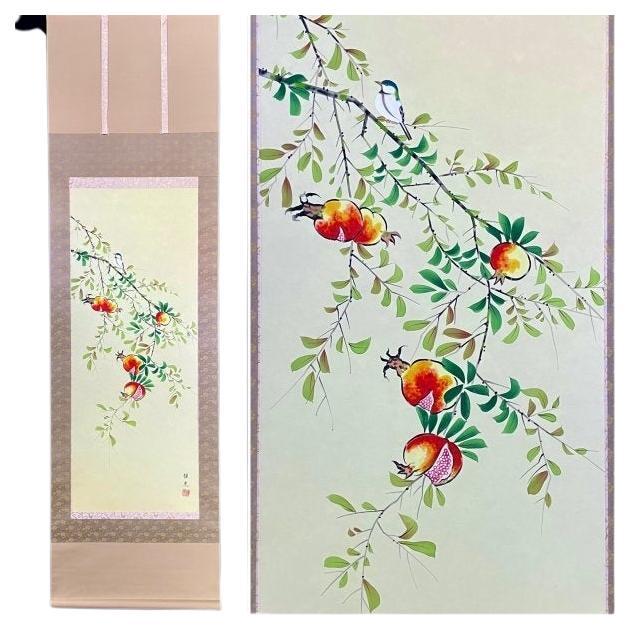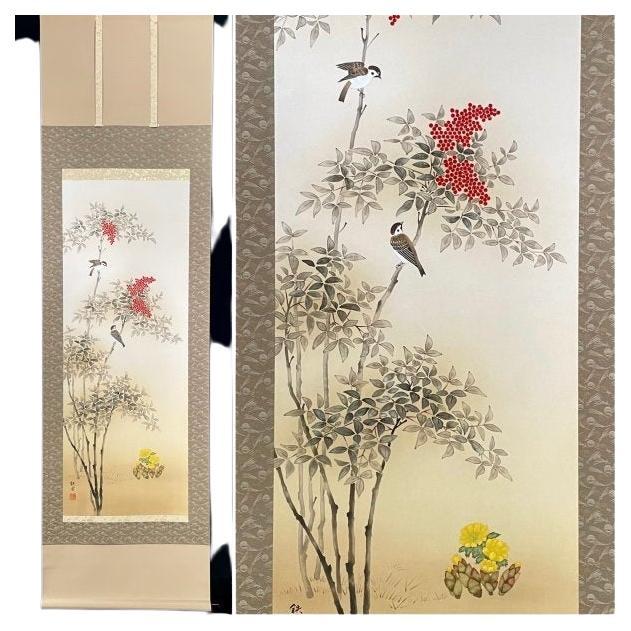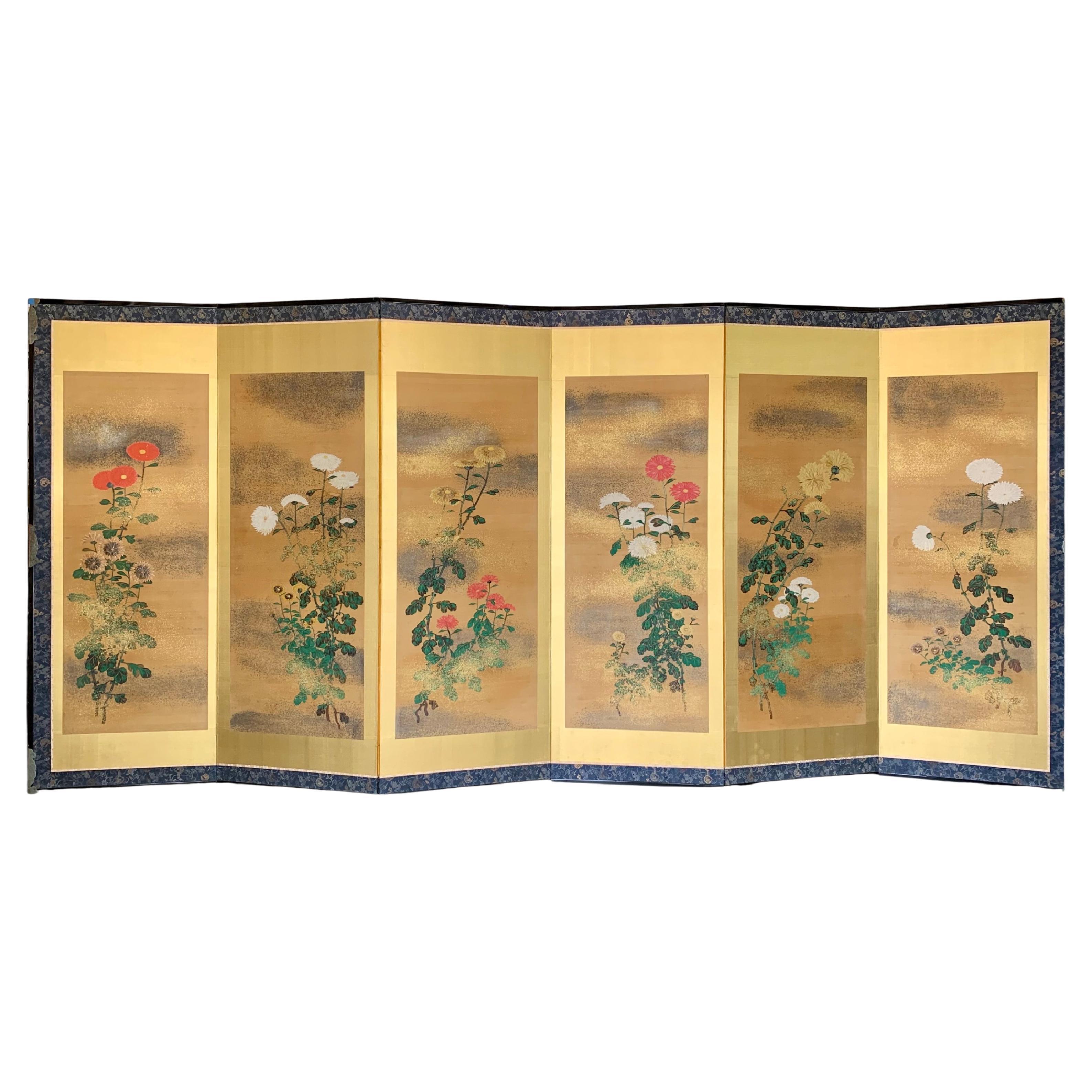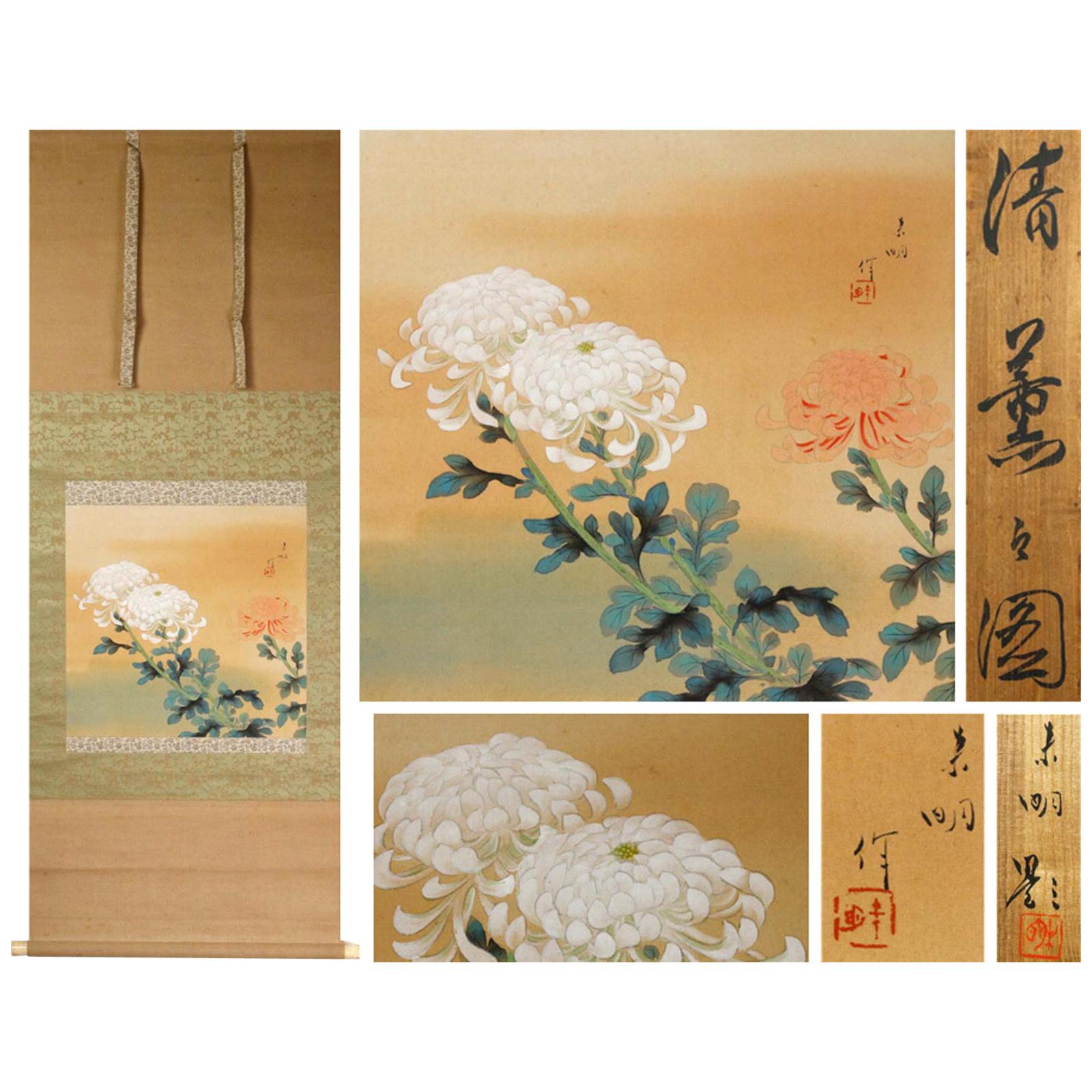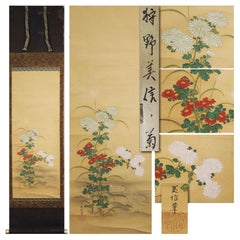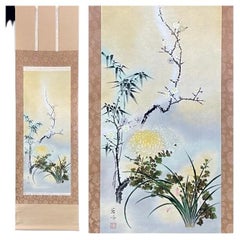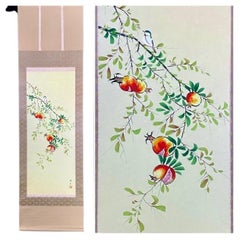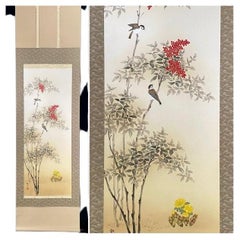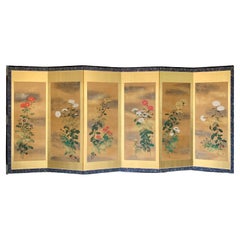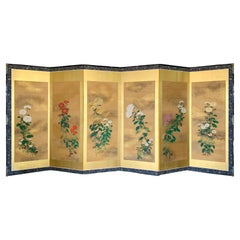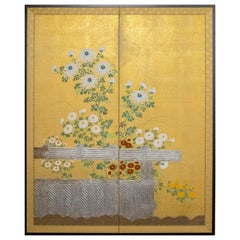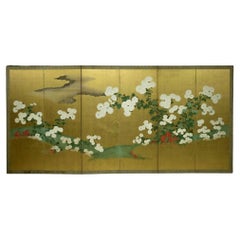Items Similar to Lovely Japanese 20th c Scroll Chrysanthemum Nihonga Flower
Want more images or videos?
Request additional images or videos from the seller
1 of 6
Lovely Japanese 20th c Scroll Chrysanthemum Nihonga Flower
$463.63
$579.5420% Off
£343.22
£429.0320% Off
€390.40
€48820% Off
CA$638.78
CA$798.4720% Off
A$711.69
A$889.6120% Off
CHF 371.53
CHF 464.4220% Off
MX$8,640.82
MX$10,801.0220% Off
NOK 4,669.94
NOK 5,837.4220% Off
SEK 4,414.23
SEK 5,517.7820% Off
DKK 2,972.57
DKK 3,715.7220% Off
About the Item
This work carefully and delicately depicts a Chrysanthemum
■Silk book, handwritten
■Condition
Lovely Condition
■Dimensions
Axis size: 1855mm (height) x 530mm (width)
Paper size: 1030mm (height) x 400mm (width)
■Inscriptions
There are inscriptions and inscriptions, etc. as shown.
■Box
box.
- Dimensions:Height: 73.04 in (185.5 cm)Diameter: 20.87 in (53 cm)
- Materials and Techniques:
- Period:
- Date of Manufacture:1900
- Condition:Wear consistent with age and use.
- Seller Location:Amsterdam, NL
- Reference Number:Seller: 301stDibs: LU4863236902582
About the Seller
5.0
Platinum Seller
Premium sellers with a 4.7+ rating and 24-hour response times
Established in 2015
1stDibs seller since 2019
266 sales on 1stDibs
Typical response time: 5 hours
- ShippingRetrieving quote...Shipping from: Amsterdam, Netherlands
- Return Policy
Authenticity Guarantee
In the unlikely event there’s an issue with an item’s authenticity, contact us within 1 year for a full refund. DetailsMoney-Back Guarantee
If your item is not as described, is damaged in transit, or does not arrive, contact us within 7 days for a full refund. Details24-Hour Cancellation
You have a 24-hour grace period in which to reconsider your purchase, with no questions asked.Vetted Professional Sellers
Our world-class sellers must adhere to strict standards for service and quality, maintaining the integrity of our listings.Price-Match Guarantee
If you find that a seller listed the same item for a lower price elsewhere, we’ll match it.Trusted Global Delivery
Our best-in-class carrier network provides specialized shipping options worldwide, including custom delivery.More From This Seller
View AllLovely Japanese 18th c Edo Scroll by Yoshinobu Kano (1747-1797), chrysanthemum
Located in Amsterdam, Noord Holland
Yoshinobu Kano
(1747-1797) A Kano school painter who was active in the early Edo period.
Kano Yoshinobu was one of the top Kano School painters of his day. He was the son of Kano Gensen and was a student of Kano Toshu, the fourth- generation head of the Surugadai atelier. Training of Kano School painters was very strict and required long days of practice. He did quite well by himself to be ordained the rank of "Hogen" in 1785 at the age of 37 or 38 and must have been able to please the court nobles with his pieces. He was, as most high- ranking Kanō School painters were, a patronage painter. Paintings are hold by the Tokio National Museum, British Museum and Boston FIne art Museum.
■Silk...
Category
Antique 18th Century Paintings
Materials
Silk
$1,708 Sale Price
20% Off
Lovely Japanese 20th c Scroll by a good Artist, Flowers Plum, Bamboo
Located in Amsterdam, Noord Holland
This work carefully and delicately depicts a river landscape
■Silk book, handwritten
■Condition
Lovely Condition
■Dimensions
Axis size: 1910 mm (height) x 542 mm (width)
Paper si...
Category
20th Century Paintings
Materials
Silk
$558 Sale Price
20% Off
Lovely Japanese 20th c Scroll Pommegranate Nihonga Flower
Located in Amsterdam, Noord Holland
This work carefully and delicately depicts a Chrysanthemum
■Silk book, handwritten
■Condition
Lovely Condition
■Dimensions
Axis size: 1840 mm (height) x 535 mm (width)
Paper size...
Category
20th Century Paintings
Materials
Silk
$463 Sale Price
20% Off
Lovely Japanese 20th c Scroll by Nakamura Tetsudou, Flowers and Bird
Located in Amsterdam, Noord Holland
This work carefully and delicately depicts a river landscape
■Silk book, handwritten
■Condition
Lovely Condition
■Dimensions
Axis size: 1897 mm (height) x 545 mm (width)
Paper si...
Category
20th Century Paintings
Materials
Silk
$843 Sale Price
20% Off
Lovely Scroll Painting Japan, 20th Century 'Showa' Artist Flower
Located in Amsterdam, Noord Holland
Overall perfect: Size scroll... 142.0cm × about 55.0cm. Painting about 40.0cm × about 41.5cm.
30-12-18-1-11 (65)
Condition
Overall Perfect: Size scroll... 142.0cm × about 55.0cm...
Category
20th Century Japanese Showa Paintings and Screens
Materials
Fabric
$712 Sale Price
20% Off
Lovely Japanese 18th c Edo Scroll by Tamamine Hasegawa , Flowers 19th c
Located in Amsterdam, Noord Holland
The following is a beautiful work of Fuyo drawn by Hasegawa using a skillful brush.
[Hasegawa]
1822-1879 Painter from the late Edo period to the Meiji period.
*Painter born...
Category
Antique 19th Century Edo Paintings
Materials
Silk
$1,708 Sale Price
20% Off
You May Also Like
Meiji Chrysanthemum Masterpiece
Located in Fukuoka, JP
Step into a world of timeless beauty with our exceptional six-panel screen from the Edo-Meiji period. In impeccable condition, each panel features stunning paintings of chrysanthemum...
Category
Antique 19th Century Japanese Meiji Paintings and Screens
Materials
Gold
Meiji Chrysanthemum Masterpiece
Located in Fukuoka, JP
Step into a world of timeless beauty with our exceptional six-panel screen from the Edo-Meiji period. In impeccable condition, each panel features stunning paintings of chrysanthemum...
Category
Antique 19th Century Japanese Meiji Paintings and Screens
Materials
Gold
Japanese Two-Panel Screen, Rimpa Style Chrysanthemums on a Twig Fence
Located in Hudson, NY
Detailed painting of varieties of chrysanthemums behind a bound-twig garden fence rendered in silvered, raised gofun. Stylized low-hanging gold mist clouds. Rimpa-style painting in m...
Category
Antique Late 19th Century Japanese Paintings and Screens
Materials
Gold
Late Edo Period Rinpa School Chrysanthemum Blossom Screen
By Rimpa School
Located in Fukuoka, JP
Late Edo Period Rinpa School Chrysanthemum Blossom Screen
Period: late Edo, early 19th century
Size: 364 x 172 cm (143 x 67 inches)
SKU: PTA13
This exquisite late Edo period Rinpa ...
Category
Antique 18th Century Japanese Edo Paintings and Screens
Materials
Paper
18th Century Japanese Rinpa Screen. White Chrysanthemums. School of Korin.
Located in Kyoto, JP
School of Ogata Korin
White Chrysanthemums
18th Century, Edo period.
A two-panel Japanese screen. Ink, color, gofun and gold leaf on paper.
Dimensions: H. 171 cm x W. 188 cm (67.5” x 74”)
On this two-panel Japanese screen we see blooming chrysanthemums, a flower which embodies the essence of autumn in Japan. Here the traditional floral theme has been simplified and stylized. The bright colors and asymmetrical composition against the delicate gold leaf create a luxurious and ornate work of art. Its background, a strikingly patinated grid of gold leaf, denies any sense of place or time and imbues everything with an ethereal glow. The leaves and stems of the plants are nothing more than pools of mottled color and ink without any outline whatsoever. These are typical Rinpa adaptations of traditional ink painting methods; tarashikomi, or diluted washes of color blended while very wet, and mokkotsu, or “bonelessness,” which creates forms without exterior outlines. The relief work of the rounded flower petals has been obtained by the moriage process (a mixture based on ground shells modeled on the surface of the paper).
On the lower right of the screen, the siganture “Hokyo Korin Jakumyo” and the “Hoshuku” seal can be read. Korin is Ogata Korin, famed for the Irises (Nezu Museum) and Red and White Plum Blossom (MOA Museum of Art) folding screens, both National Treasures. Korin worked in both Kyoto and Edo in the mid-Edo period. Korin was using the art name “Jakumyo” just after he received the Hokyo level, which was in 1701.
This particular screen was published in May of 1961 in the Japanese Sansai Fine Art Magazine*. An in depth article accompanies the photograph of the screen and and a photograph of the signature and seal. This article devotes much of its body to discussing the moriage technique, how it enlivens the chrysanthemum flowers and Korin’s specific skill in using the technique. The article goes on to discuss the most famous works of Korin, utilizing this technique, which were known at the time. Specifically a two-panel screen held in the Honolulu Museum which was discovered in the store-house of Takahashi Soan. A two-panel screen pair which the Nakano family own. A two-panel screen pair with chrysanthemums in moriage in fan designs owned by the Nomura family. Also a small folding screen featuring chrysanthemums held in the Yamato Bunkakan. The article goes on to say that this particular two-fold screen came from the Nijo family. Korin is known to have had a strong connection with the aristocratic Nijo family. The article explains that Korin received a lot of favors from the Nijo family and that this screen would have been gifted to them.
Since that time the Honolulu screen has been amended to ‘attributed to Ogata Korin’ and I do not know further details of the other 3 screens. Other Chrysanthemum screens...
Category
Antique 18th Century Japanese Edo Paintings and Screens
Materials
Gold Leaf
Japanese Edo Period Two-Panel Screen with Chrysanthemums
Located in New York, NY
Japanese set of sliding doors that have been mounted as a screen in the early 20th century and the panels from the 19th-century.
ABOUT
This screen is indeed a masterpiece o...
Category
Antique 19th Century Japanese Japonisme Paintings and Screens
Materials
Wood
More Ways To Browse
Japanese Scroll Flower
Antique Bird Nest Prints
Antique Egyptian Doors
Antique Freight Elevator
Antique Horse Ornament
Antique Rose Quartz
Antique Victorian Buttons
Bombay Chests
Bronze Thai Hand
Ceramic Hen
Champleve French Clocks
Chinese Bronze Buddha
Chinese Lacquer Wall Panels
Chinese Tapered Cabinet
Chinoiserie Wood Panel Art
Circular Art Deco Cabinet
Eloquence Furniture
Enamel Fox
